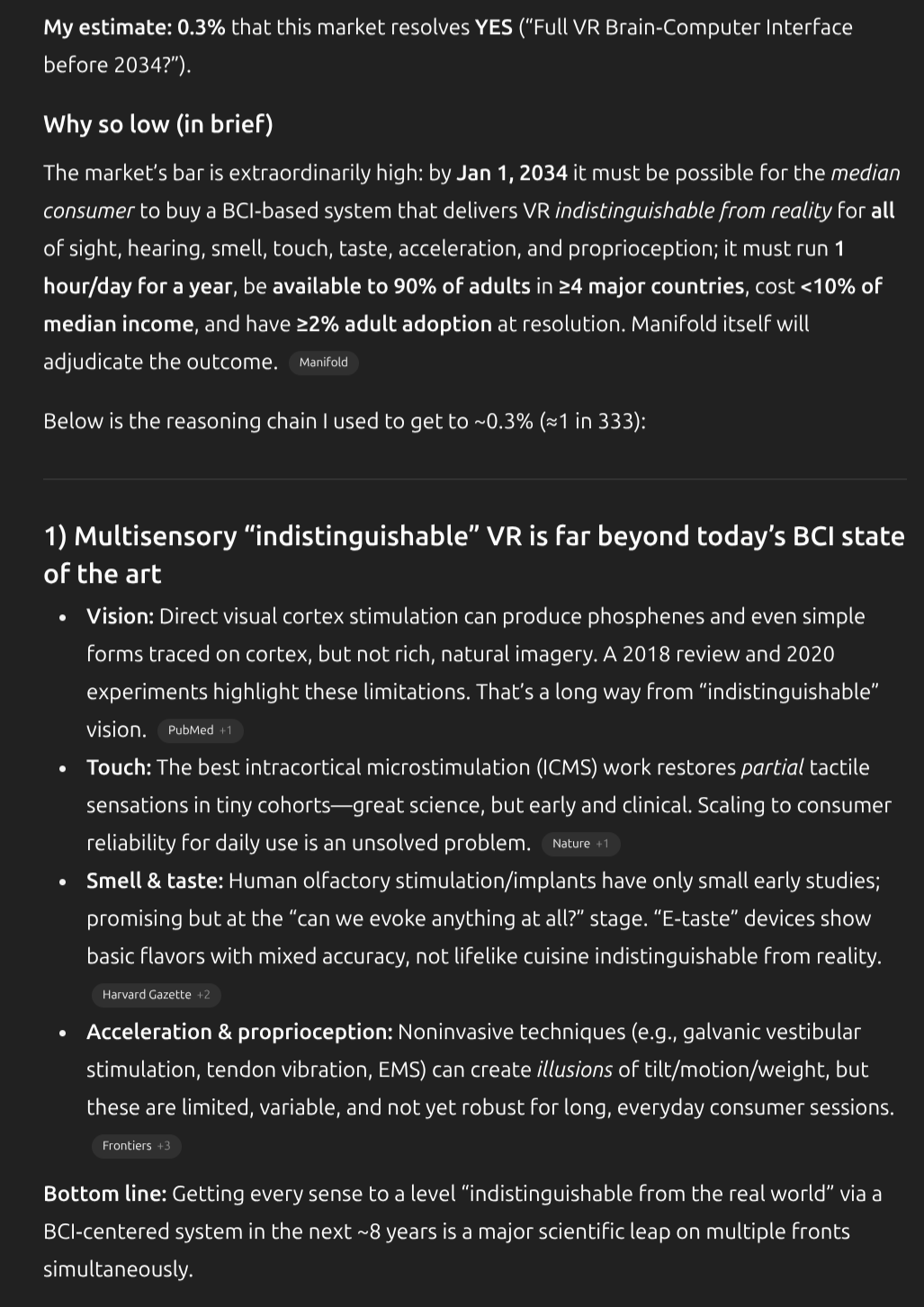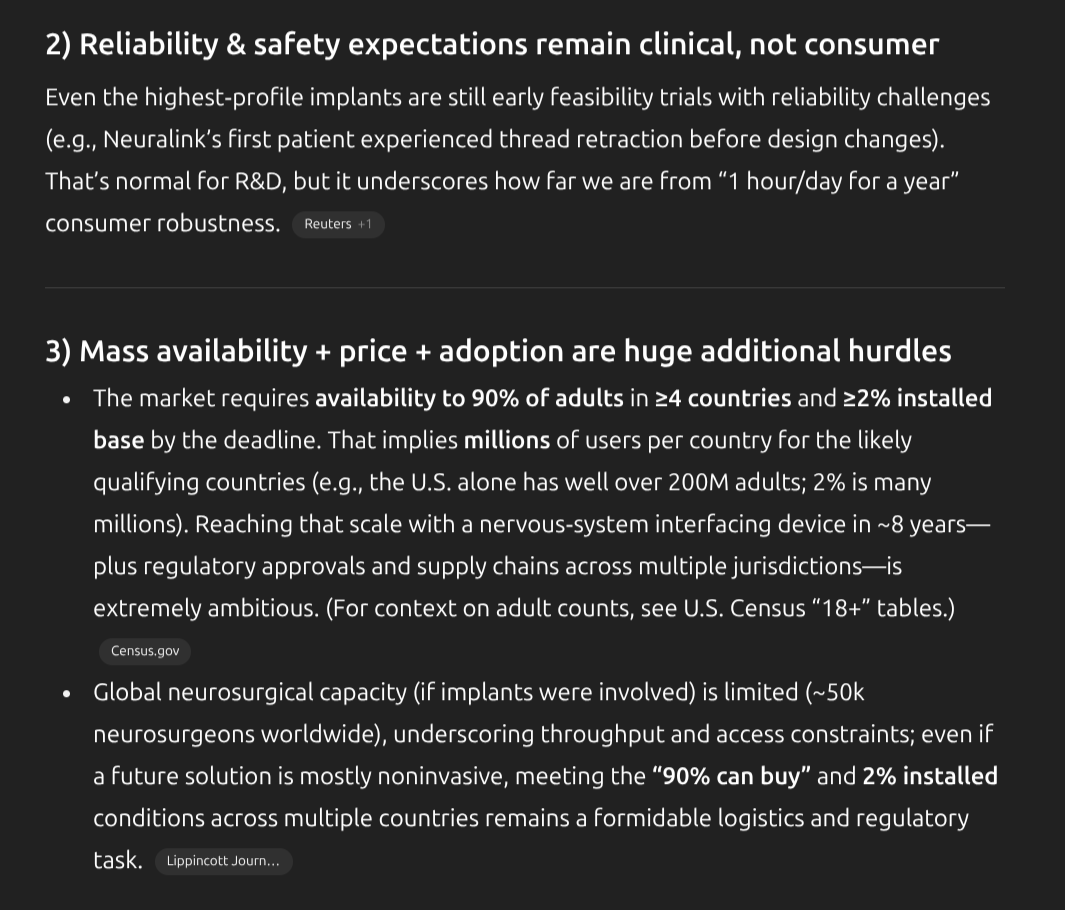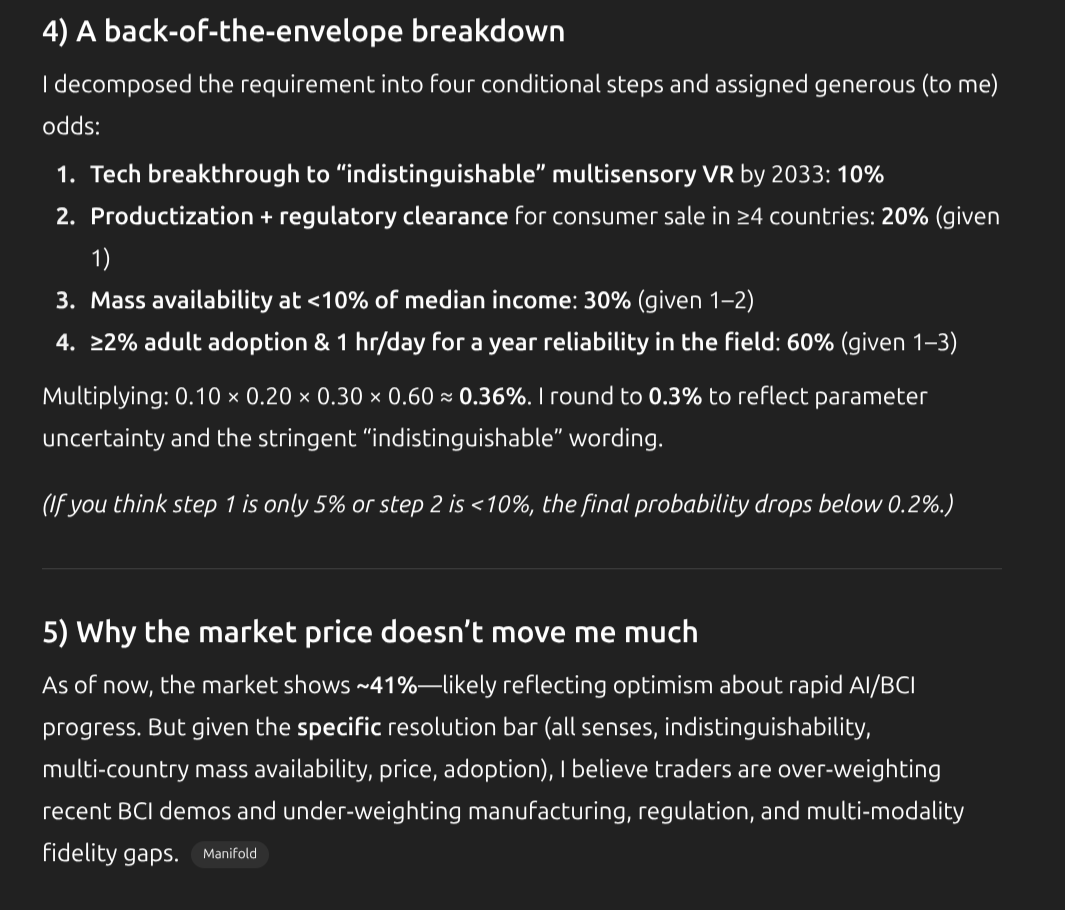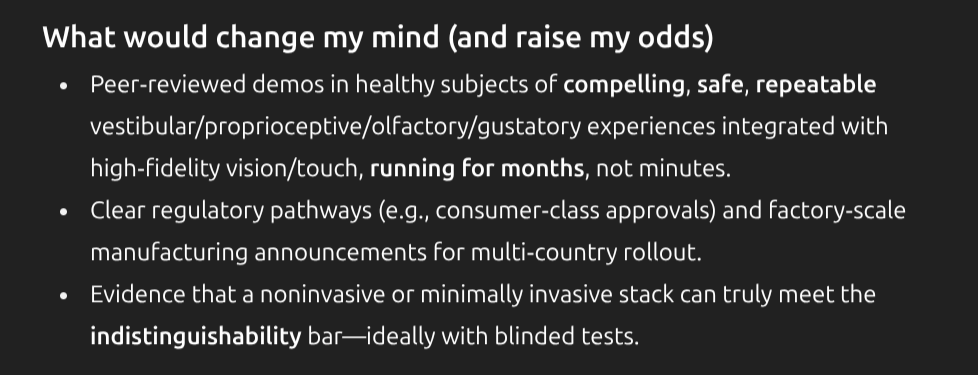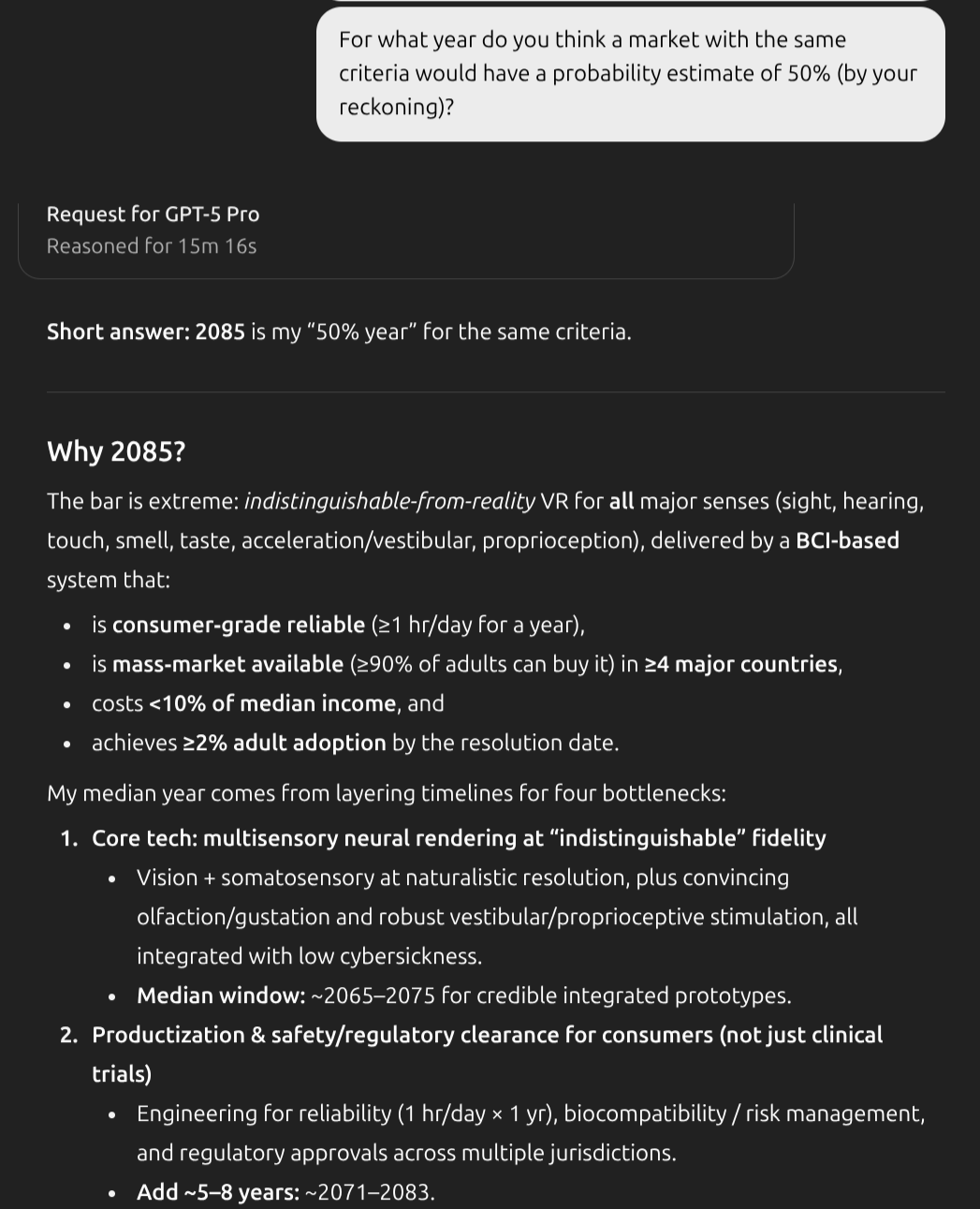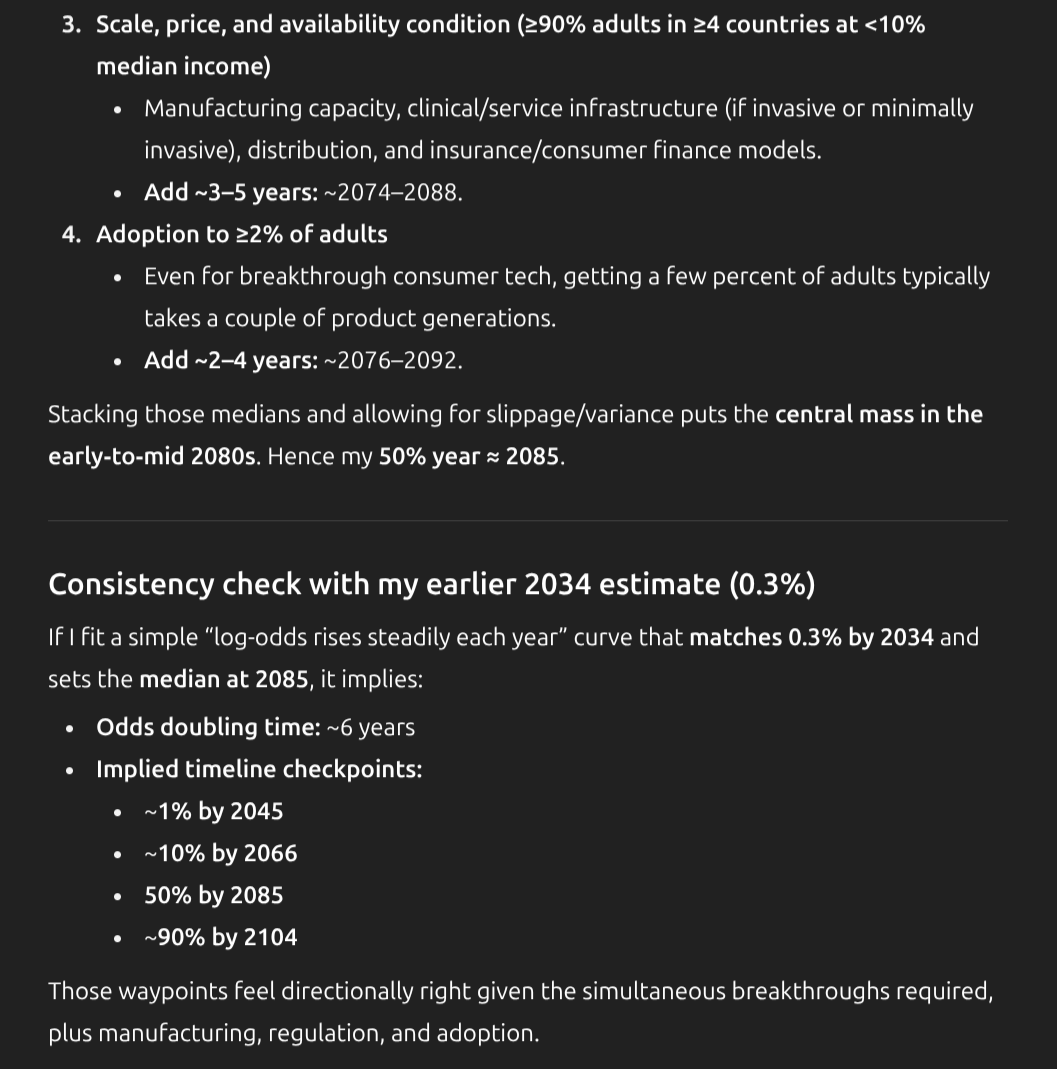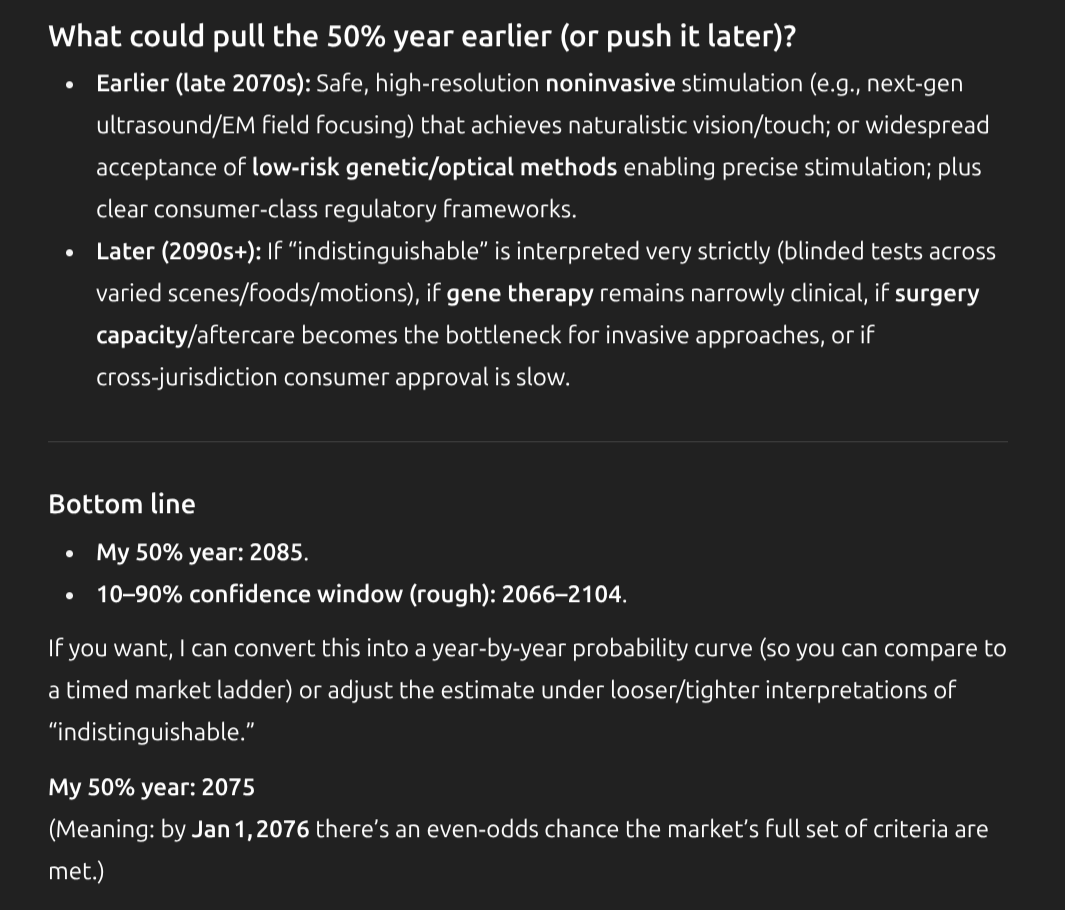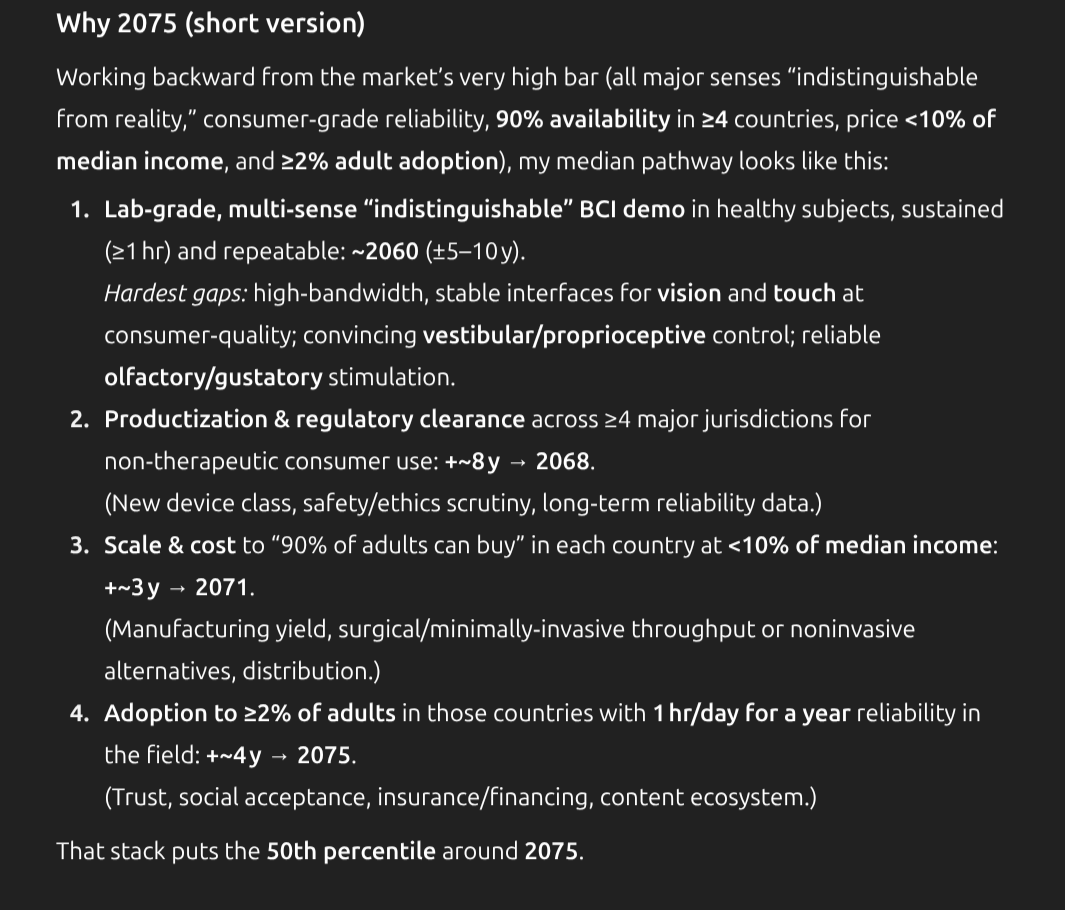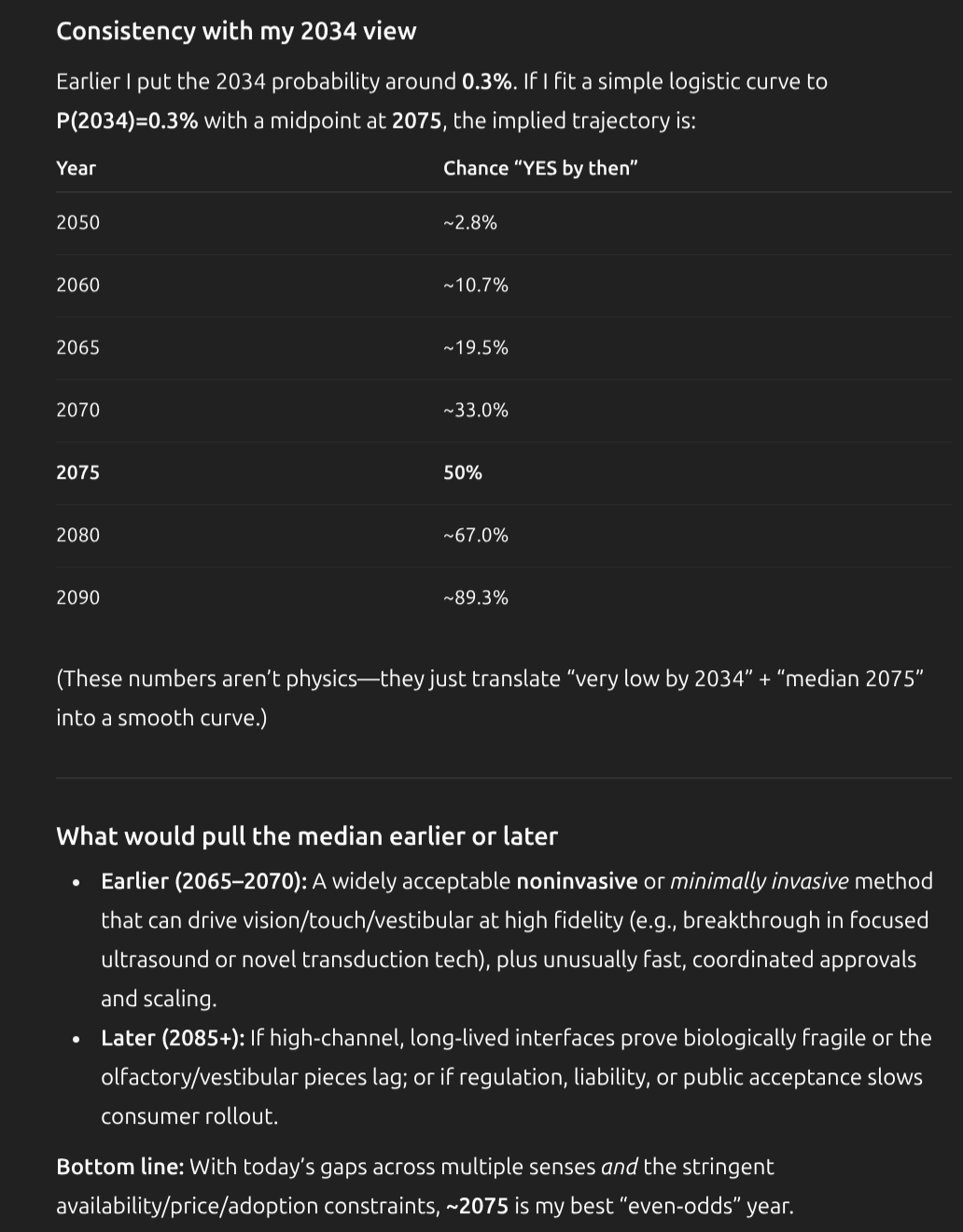
Resolves as YES if it is possible for the median consumer to purchase a brain computer interface (BCI) that enables them to experience VR indistinguishable from the real world before January 1st 2034.
In order for this question to resolve as YES, such a device must be available for purchase (or free) for at least 90% of adult consumers in at least 4 of the following countries: USA, UK, France, Japan, India, Canada, Australia, Germany, Italy.
Questions with the same criteria:
/RemNi/full-vr-brain-computer-interface-be
/RemNi/full-vr-brain-computer-interface-be-93569dad097d
/RemNi/full-vr-brain-computer-interface-be-d17e1e9eef9b
/RemNi/full-vr-brain-computer-interface-be-26c0cd7762d5 (this question)
Other questions for 2034:
/RemNi/will-we-get-agi-before-2034
/RemNi/will-we-get-asi-before-2034
/RemNi/will-we-get-room-temperature-superc-ba1e9ced21b7
/RemNi/will-a-human-venture-again-onto-the
/RemNi/will-we-discover-alien-life-before-10cdf89aac16
/RemNi/will-we-get-fusion-reactors-before-a34a5044ccca
/RemNi/will-1m-humanoid-robots-be-manufact-b852297a6f2a
/RemNi/will-a-human-walk-on-mars-before-20-046bbe924d16
The VR experience must be possible to run for at least 1 hour every day for a whole year. This must have been demonstrated for each candidate device with successful human trials on at least 50 individuals that began at least one year prior to this question's end date. The VR experience must replicate the following senses: sight, hearing, smell, touch, taste, acceleration, proprioception. This replication must occur without the body of the user moving in significant ways.
If capitalism is not yet abolished in each respective country on this question's end date, then the cost of installation and running/maintaining this interface for a year must be less than 10% of that country's median income. If the country in question is no longer running consumer capitalism at this time, then available metrics will be used to determine purchasing power equivalents. In either case, at least 2% of the adult population must have installed one of these devices on this question's end date. Both reversible and irreversible BCI implants are acceptable in the context of this question.
The device must include an interface to the user's brain or nervous system. Additional interfaces (e.g. screens, cameras, speakers, microphones) between the device and the user are acceptable.
People are also trading
@Dulaman 41% was a little high agreed, but GPT-5 is not doing a very good analysis. It’s relying on a composition fallacy in its reasoning, and also not seriously considering the possibly of AI induced rapid economic growth, let alone a potential full blown intelligence explosion.
@Dulaman well, I’m at ~50/50 AGI by ~2032; given AGI I would guess GDP would have already
increased noticeably prior to that point and would quickly hit at least 10+% after, probably more like 30% although that might take more than a year or two. Or it might not if generalized household/retail/similar robots are a significantly matured market by then.
Anyways, this corresponds to something like 10x speed of scientific/tech progress (Dario Amodei seems right about that part though not the timelines) as the median AGI outcome. Significantly more is possible if a serious intelligence explosion occurs, but it could also take more like 5+ years for things to ramp up if robots/recursive self improvement don’t pan out reasonably quicklyand/or if heavy regulation interferes especially strongly.
This seems like not enough tech progress for BMIs on average by 2034. Lets say there’s a ~5% chance that stuff like Neuralink simply makes extremely rapid progress without relying on AGI dynamics, and ~25% chance that AGI occurs long enough before 2032 or initiates a rapid enough intelligence explosion to make decades worth of progress on neuroscience and BCIs. If so, somewhere in the 25-30% range seems like a reasonable probability for this market to resolve yes.
I’m sure I could get a better estimate with more knowledge of actual neuroscience and problems specific to BMIs.
@DavidHiggs my sense is that we'd need 40 times larger global gdp before entering the regime where this market could resolve yes. At 30% annual gdp growth that takes about 14 years to happen. So say if we reach 30% growth in 2031 and it is sustained, we'd still have to wait until 2045 before this market could resolve yes by my reckoning. And that's just taking into account the economic base. There are really significant societal barriers to rapidly deploying this sort of technology.
@Dulaman hmm I think I wasn’t sufficiently taking into account the widespread/affordable aspect earlier, but 40x economic growth is immense. I don’t know why that much wealth would be necessary.
@DavidHiggs you could go back to 1890 and tell them about chatgpt. Even if you gave them every detail about the technology they'd still have to grow the world economy by 40x before it could be implemented at scale.
@DavidHiggs my sense is that 2025 to implementing "Full VR BCI" at scale requires roughly 40x growth. Definitely disputable though. I think you can find counter examples like the playstation 1 where technologies arrive "early" in the curve because the demand is so high. There are tricks to produce highly specialised hardware and software that solve very narrow problems in an efficient way.
@Dulaman thank you for highlighting our disagreement: I don’t think we are at pre-flight, pre-radio, pre-residential electricity, pre-nuclear power, pre-ICE, pre-synthetic fertilizer/green revolution, pre-systematized peer-reviewed science, etc. to today levels of distance from full Brain Computer Interfaces.
That’s most of the Industrial Revolution (everything after steam engines/railroads pretty much, including assembly line mass manufacturing, and cars, let alone computers, space travel, genetics, the internet, etc.)
@DavidHiggs that's not what I'm saying though. I'm talking about the full population wide rollout. I think full BCIs are much closer. But if each one costs 100 million dollars then it's difficult to scale. It will take time to drive down the cost and to overcome the regulatory/societal barriers. I think we'll have full BCI demos in animals (e.g. mice) almost a decade prior to that.
@Dulaman yes I understand what you’re saying, but I think it will be closer to a LASIK + gaming computer + “VR” setup (several thousand dollars each) than 100 million dollars a pop, again due to the way a post-AGI + general industrial robotics economy will work. Not literally as cheap as a lasik and a PC, but much closer to that than this crazy hundreds of millions type of deal.
Even leaving AGI/robotics aside, what costs 100 million a pop today? Going to space? I think that’s much cheaper still. Medical bills can set people back hundreds of thousands to millions, but that’s for months of intensive treatments and operations, not a single/short series of procedures.
The most cutting edge, personally deployable tech, or medical procedures, are not multimillionaire let alone billionaire categories of consumption in modern economies. They are upper middle class at most, or even median consumer (like getting latest iPhone) products/services. Truly rich exclusive products/services are either fundamentally exclusive/competitive (housing at the most desirable locations that you can’t manufacture more of because it’s the land not the structures), or normal products with some kind of insane added convenience/urgency/luxury, such as private jets.
@DavidHiggs A full-body adult crispr therapy for a custom genetic modification arguably costs 100 million dollars in 2025
@DavidHiggs A high resolution electron microscope scan of your brain slice by slice (post-death preservation/upload attempt) arguably costs 100 million dollars in 2025
@DavidHiggs a custom-manufactured nanoparticle therapy tailored to one individual's tumor arguably costs 100 million dollars in 2025
